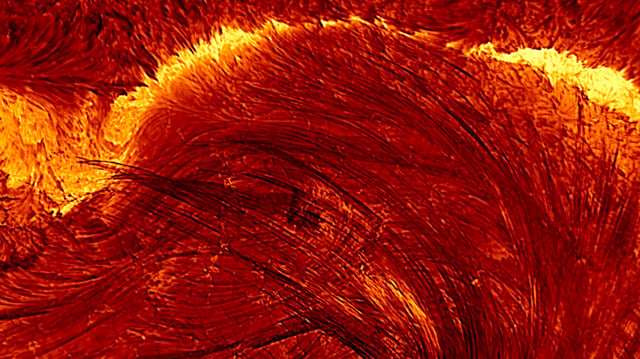Overview
- Peer-reviewed results published August 25 in The Astrophysical Journal Letters detail hundreds of ultra-fine strands resolved during the flare’s decay phase.
- Loop widths averaged about 48.2 kilometers with some features near 21 kilometers, the smallest coronal loops imaged to date.
- DKIST’s Visible Broadband Imager at the H-alpha wavelength resolves solar structure down to roughly 24 kilometers, more than 2.5 times sharper than prior ground-based systems.
- The X1.3-class flare occurred on August 8, 2024 and was captured at 20:12 UT in a field of view about four Earth-diameters across, marking DKIST’s first X-class flare observation.
- Researchers suggest the strands may be elemental loop structures that could constrain magnetic reconnection scales and inform forecasting, a hypothesis that needs further observations.

